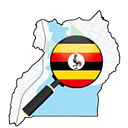Improving Sailing Safety and Rescue Operations in Uganda
OSM Uganda’s Low-Cost Water Transport GPS Trackers, The Safe Sail Project
According to the Ministry of Works and Transport, an average of 3,000 people drown in Ugandan water bodies every year but not all incidents are reported. This is due to limited navigational aids and the absence of tracking systems, to improve safety and rescue operations, OpenStreetMap Uganda is developing low-cost GPS trackers under the Safe Sail Project which is a direct response to these challenges.
With the vast experience in area navigation and mapping gained over the last decade, OSM Uganda is taking a bold leap in water safety by leveraging open-source tools and software to develop low-cost GPS trackers for boats and life jackets.
These GPS trackers, designed to be lightweight and easy to install, are adaptable to various water vessels, from small fishing boats to larger passenger ferries. Boats equipped with these tracking devices are trackable in real-time, providing a significant improvement in aquatic navigation and safety.
GPS trackers are a valuable tool for improving safety and rescue operations on lakes, particularly in areas where resources may be limited. In Uganda, where many people rely on lakes for transportation and fishing, the implementation of low-cost GPS trackers for boats and life jackets could greatly enhance safety and rescue efforts.
One of the primary benefits of GPS trackers is their ability to provide real-time location information. In the event of a boat accident or other emergency on the water, a GPS tracker can quickly and accurately pinpoint the location of the boat and any individuals on board. This can be crucial in speeding up rescue efforts and increasing the chances of a successful outcome.
The affordability of these GPS trackers is another crucial aspect. By keeping the costs low, we ensure that these life-saving devices are accessible to even the small-scale fisher folk who make up a significant portion of the lake users. This inclusivity can profoundly impact the safety culture among local communities, potentially saving countless lives.
GPS trackers can also be used to monitor the movements of boats and individuals on the water. This can be especially useful for tracking the location of fishing boats, which may be out on the lake for extended periods of time. By monitoring the movements of these boats, authorities can ensure that they are operating safely and can respond promptly in the event of an emergency. This also promotes accountability and transparency in aquatic activities.
Another potential use for GPS trackers is in the tracking of life jackets. In the event of a boating accident, individuals who are thrown overboard may struggle to stay afloat or find their way back to shore. By attaching a GPS tracker to a life jacket, rescuers can quickly locate and rescue individuals who may otherwise be difficult to find.
This presents an opportunity to chart unrecorded water routes and potential hazards. Detailed maps not only help to guide vessels but also inform the development of safer navigation routes. This innovative use of GPS trackers goes beyond individual safety to improving the overall safety standards of aquatic transportation in Uganda.
Ephraim Oburu, the Innovation officer at OpenStreetMap Uganda, together with his team, have created a prototype tool and platform that they have tested in a controlled environment and are planning to have more in-environment tests on Lake Victoria.
“The need to track boats on our lakes is crucial to ensure the safety of our fishermen and passengers. Every month, we witness fatal accidents on the lakes, and it is heartbreaking. With the implementation of GPS trackers, we can greatly improve our response to emergencies and enhance the overall safety standards of water transportation in Uganda.” — Chairperson of Katosi Landing Site, Mukono
The chairperson of Katosi Landing Site in Mukono, expressed to OpenStreetMap Uganda that fishermen in the area experience fatal accidents on the lakes at least every month, emphasizing the urgent need for boat tracking systems.
Rescue operations on Uganda’s lakes can be a challenging and time-consuming task, with limited resources and a lack of reliable information often making it difficult to locate and assist those in distress. According to data from the Uganda Red Cross, there were over 100 reported boating accidents on Uganda’s lakes in 2020, with many more likely going unreported. In addition, the vast size of these bodies of water and the lack of infrastructure can make it difficult to reach those in need in a timely manner.
OpenStreetMap Uganda’s Safe Sail project holds the potential to revolutionize water safety in the country. By using open-source tools and software, we hope to reduce the cost of these important safety resources and make them more widely available. The project’s inherent focus on affordability and accessibility, combined with cutting-edge technology, is a testament to the organization’s commitment to community safety and well-being.
Acknowledgments
Oburu Ephraim: Innovation officer, OpenStreetMap Uganda
Edwin Kiyimba: Research and Innovation Lead, OpenStreetMap Uganda
Sandra Waniwroth: Research and Innovation Associate, OpenStreetMap Uganda
